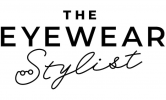Can I Use Blue Light Glasses For Anti-Ageing?
Yes and no! There is some myth-busting to be done around blue light glasses.
Blue light glasses certainly are useful, but are often mis-sold as for screen time only. Blue light radiation is more frustrating for our eyes and certainly is emitted from the screens we’re increasingly sat in front of nowadays – but what you may not realise is that blue light is naturally abundant all around us and is found in the sun’s rays (whether it’s shining or not, much like UV and IR). The benefits of blue light glasses for working on a laptop or computer, or for scrolling in bed to promote better sleep and minimise sleep disruption, have also been oversold somewhat – you can combat this simply by turning ‘night mode’ on your devices.
What you might notice when you do this is that the screen takes on a yellow-ish tone – much like the glasses themselves, which usually have what I'd describe as a light ‘comfort tint’ which dulls the harsh whites and softens colours to make them more relaxing on the eyes. This actually looks yellowy when you take a closer look, to combat the blue tones. Often standard blue light glasses also have a strong glare which can affect performance on video meetings and calls (I deal with a bespoke lens company who build the blue light protection into the material of the lens so lens looks clear, but still has all the protection in there - see my video here for more on this!)
When it comes to the difference between sunglasses and transitions and the benefits or drawbacks compared with this new technology – essentially anti-ageing lenses offer the same level of UV protection as a sunglass in a clear lens (plus much more – as sunglasses generally only protect us against UV light). One thing people often forget is that sunlight prevails even when it’s cloudy or when you’re sitting indoors – so you’ve still got to keep your eyes healthy when sunglasses aren’t suitable attire.


What many people don’t know (likely due to the fact that sunglasses are always tinted in dark shades) is that UV protection is actually a colourless filter - any lens can be coated for UV protection – it only costs around £10, so this is well worth asking at your next appointment with your optician!
This is yet another advantage - cosmetically the anti-ageing lens still looks completely clear. So you won’t see them and think: ‘oh that’s weird, must be one of those anti-ageing lenses’- it just looks like a normal lens - a clear, colourless filter. If you were to critically and closely look at it versus standard clear lens, you might notice a slight yellowness to the complexion of the lens – but that’s if you were really putting it under the microscope and it’s not something you’d generally notice.
Anti-ageing lenses offer combined 3-in-1 protection against all three separate factors which age the eyes - offering superior and comprehensive advantages for eye health and the appearance of skin around the eyes. Much more practical, economical, and eco-friendly than carrying around three pairs of glasses, I’m sure you’ll agree!
Let’s Get Started!
Get expert advice on what glasses and sunglasses will not only suit you but enhance how you look and feel. Styling sessions from just £99.

